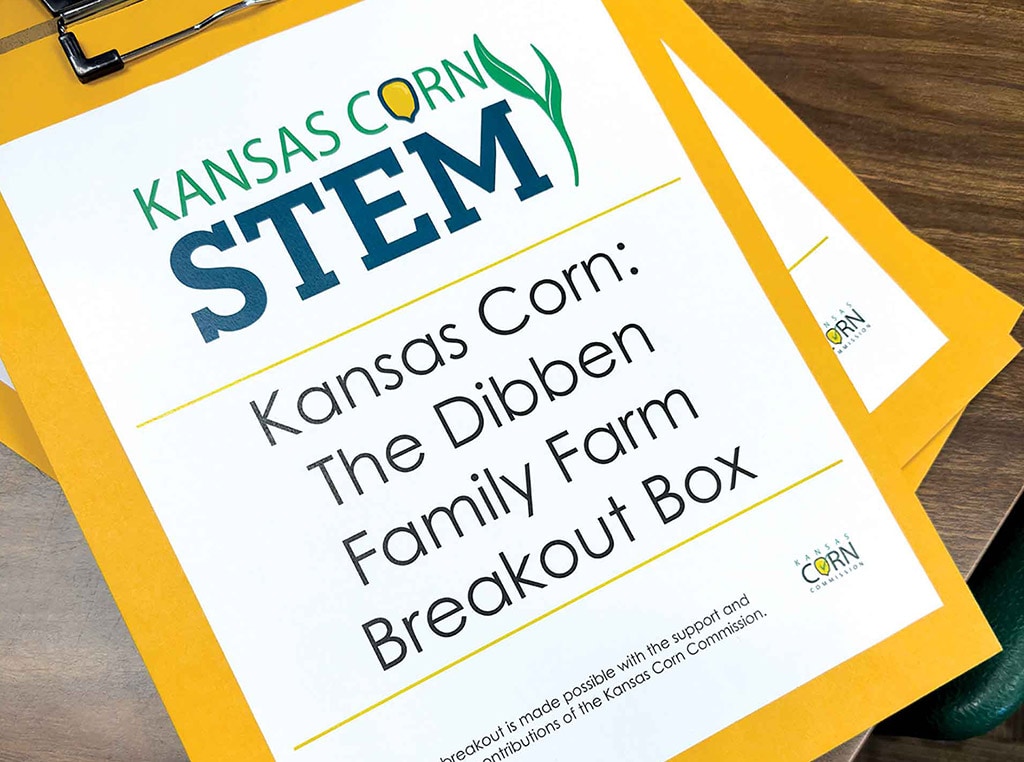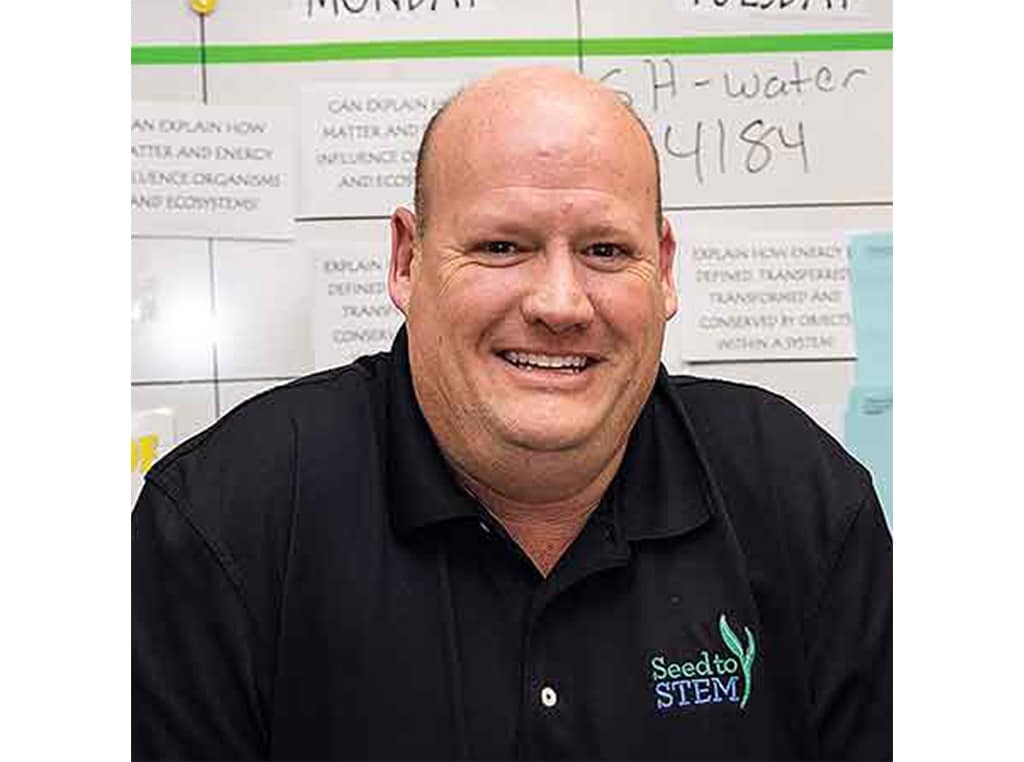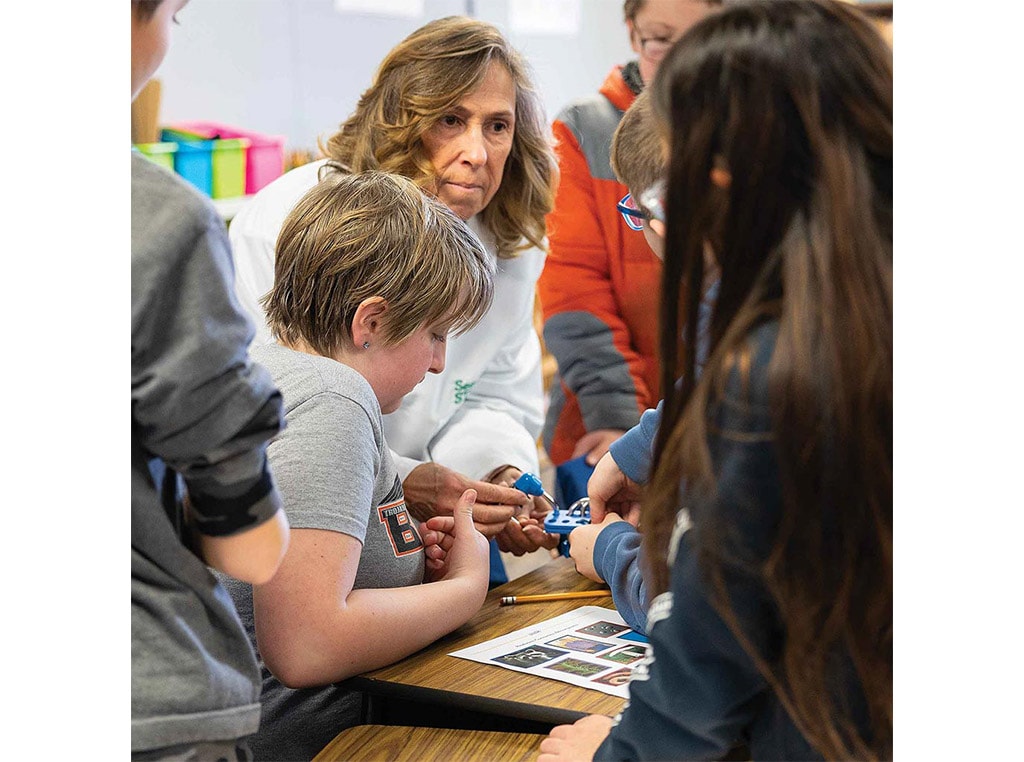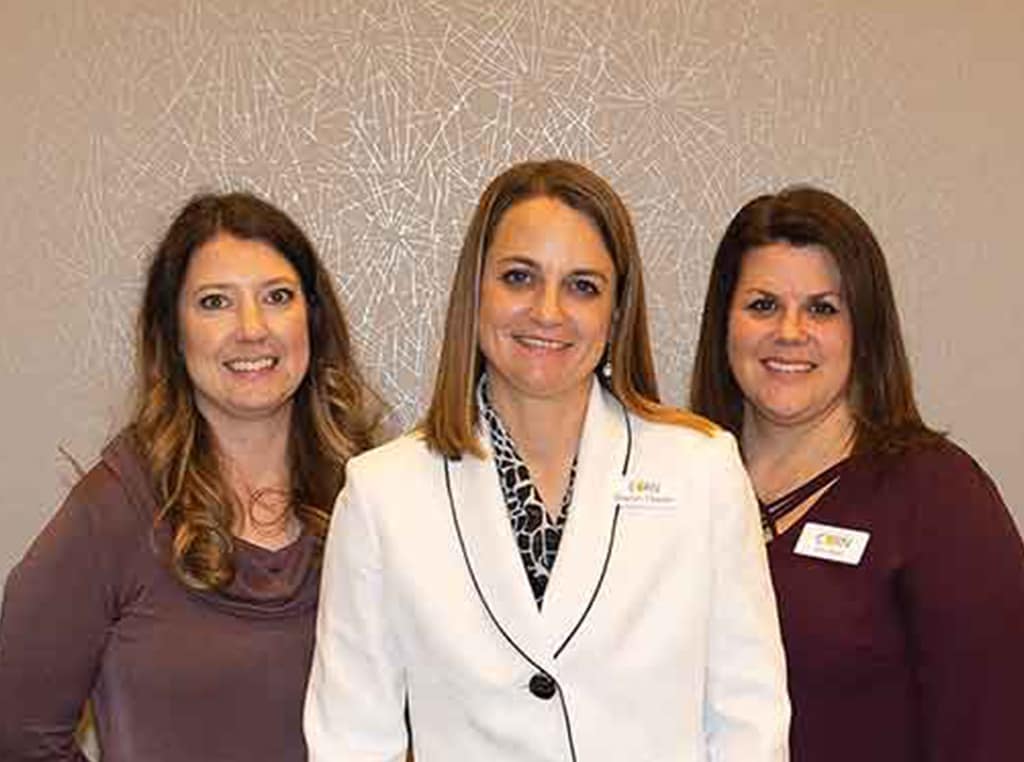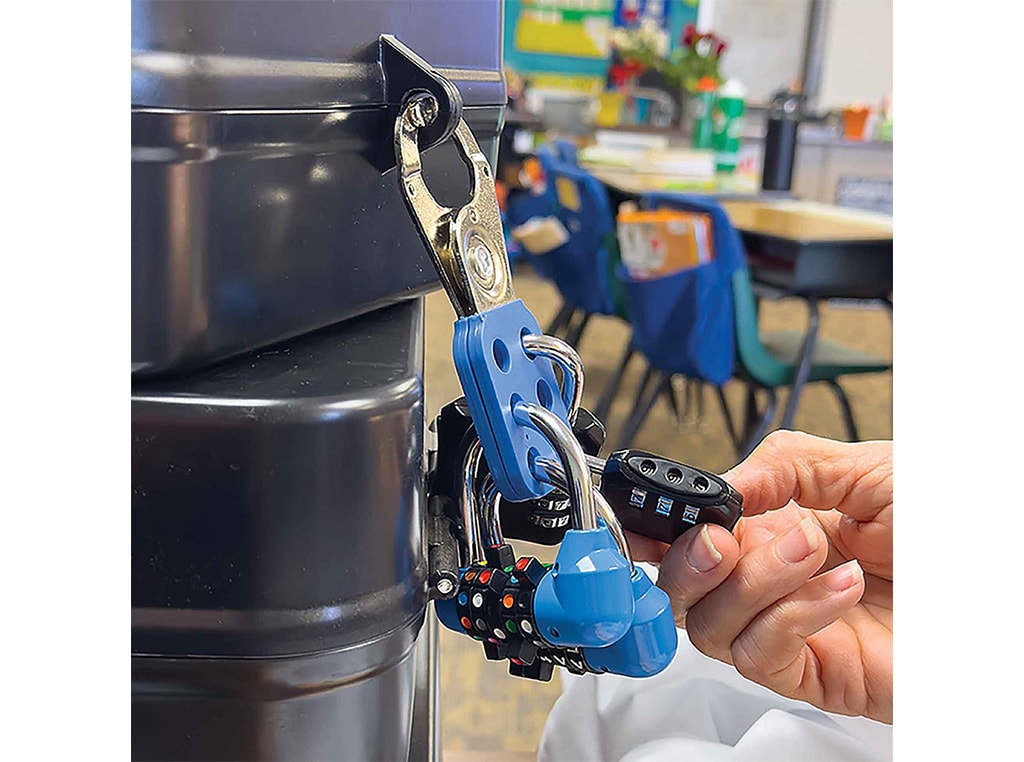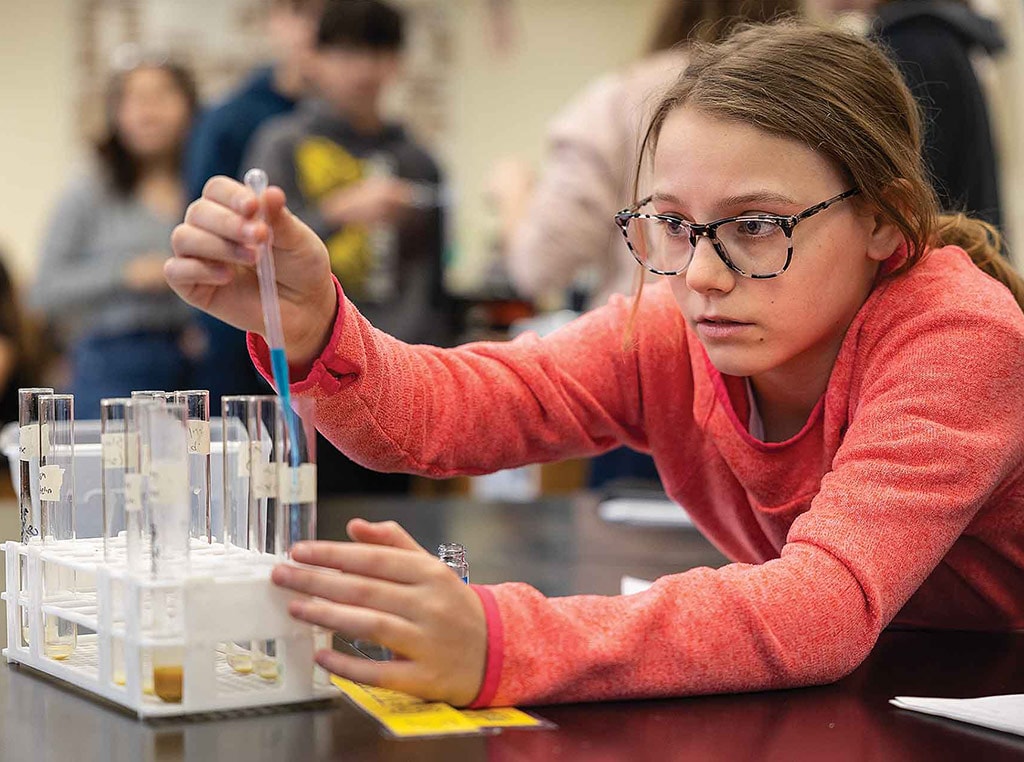Agriculture, Education June 01, 2023
Corn in the Classroom
.
Kansas Corn STEM engages young minds.
The last few minutes before students enter a bright, roomy classroom trimmed in the Salina South Middle School colors of green and yellow, Brent Conner ensures beakers and hot plates are in their places and racks containing test tubes and solutions are ready.
Seventh graders in Conner's chemistry class at the Kansas school will learn about chemical reactions using a lesson plan created as part of Kansas Corn STEM's collection of lesson plans for Kansas teachers.
"This is cool!" exclaims one 12-year-old working with his colleagues in a small group. "I feel like Walter White in an episode of Breaking Bad."
STEM means Science, Technology, Engineering, and Math. Kansas Corn STEM puts an agricultural twist on these concepts using corn, biotechnology and ethanol. Corn seeds, plants, soil, and end-products derived from corn comprise entire lesson plans, all of which meet Kansas Department of Education standards.
"Our goal is to help students understand more about what's happening around them every day, and the state they live in," says Sharon Thielen, director of education at Kansas Corn, the umbrella group for the Kansas Corn Commission and Kansas Corn Growers Association. "These lessons are more relatable and help the kids connect with their community."
Corn farmers fund Kansas Corn STEM through the agency's one-cent per bushel checkoff. Farmers contributed $600,000 in 2022, but the educational effort relies on the state's teachers to ensure its success, Thielen explains.
"It is a teacher-run program," she says. "Kansas teachers write lesson plans and do all the training. That's why it has been a success."
Each summer, the program's Seed to Stem workshops support 120 middle and high school teachers who not only learn how to teach the lesson plans from their peers, but also are exposed to the corn industry from the field to ethanol plant. Participants receive a tote filled with educational supplies that support Seed to Stem lessons; additional supplies are also free, Thielen says.
"The only expense to teachers is travel to the workshop. Everything else is funded by Kansas Corn."
Farmer leaders who serve on the Kansas Corn Commission charged staff with developing an education program for kids in 2016. Since, more than 3,000 teachers are supported through the program; they have reached more than 90,000 kids.
Kansas Corn STEM lesson plans are inquiry-based, encouraging students to learn with hands-on activities. Brent Conner, science teacher at Salina South Middle School, is a Kansas Corn STEM's lead teacher. Vicki Jackson, fifth grade teacher at Beloit Elementary, praises hands-on lesson plans. Kansas Corn STEM staff are Mary Skillman, Sharon Thielen and Erin Rios. Beloit Elementary students use clues from a food web lesson plan. Salina South seventh grader Danica Hazel works on an ethanol lab lesson.
Hands-on learning. Kansas Corn STEM features an advisory board comprised of educators to ensure classroom objectives are met. Feedback has been overwhelmingly positive, Thielen adds, and the program continues to grow. Lesson plans were first available for Kansas grades 7-12 only, but the program soon expanded to include kindergarten-6th grade. In the last two years, Kansas Corn STEM developed lessons and materials for pre-kindergarten and home-school students.
"That the teachers keep coming back and wanting the resources multiple years tells me it's working in the classroom," she adds.
Kansas Corn STEM promotes inquiry-based learning, in which teachers teach lessons, and kids must discover the answer rather than simply being told.
On a cold January day, Vicki Jackson's fifth grade science classes at Beloit Elementary School are learning the food web with Kansas Corn STEM lessons and supplies.
"It's all hands-on, and that's how many kids learn best," Jackson says.
Beloit students break up into small groups, gathering clues that reveal answers to open a series of locks on a "Breakout Box." Working together, the fifth graders learn about producers, consumers, and decomposers—the food web—based on a Kansas corn field.
"Many of these kids either live on farms, or their parents work on farms or in agriculture," says Jackson, who serves on the Kansas Corn STEM advisory board. "Agriculture is what makes things go around Beloit, so it's really easy to incorporate these lessons."
In Salina, Conner's seventh and eighth grade classes light up when they learn how corn is used to create energy.
"It is important to teach kids that agriculture is more than just food," he explains. "There is so much science behind agriculture to support career pathways."
Fewer farm families make up the Kansas landscape, so Kansas Corn STEM has an added benefit of helping bridge the urban-rural divide, Moore adds.
"We find examples of students in rural areas who don't have a firm understanding of the agricultural industry around them. Kansas Corn STEM is a worthy investment of checkoff dollars, similar to expanding markets for corn in any other way," he says. ‡
Read More

AGRICULTURE
Want to share your point of view?
People like you shape John Deere products and services!

AGRICULTURE, RURAL LIVING
Land of the Faroes
Viking legacy in the North Atlantic.


